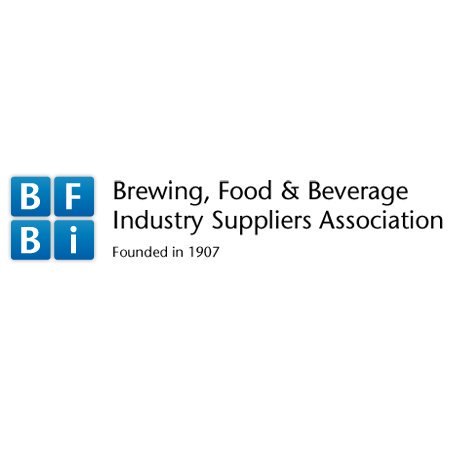Chief Executive of the BFBI Ruth Evans MBE aims to outline the basics of what licensees and “craft keg” brand owners need to know in order to get their beers to the bar.
It’s exciting times at the bar, with craft keg brands increasing in popularity with the traditional cask ale consumer.
Much of the keg dispense system infrastructure in the UK is owned by one of the large brand owners, namely ABInBev, Carlsberg, Molson Coors, Heineken, (known as Brands Dispense Association – BDA) or by Regional Brewers (known as National Technical Liaison Group – NTLG). These brand owners (known as primary suppliers) own and maintain the system, charging on this cost as part of the Technical Services costs provision within the price of a barrel of beer.
The cellar benefits from having two derogations from legislation (confined space and simple pressure vessel legislation). These derogations are due to the excellent safety record and tight control over best practice exercised by the primary suppliers, with installation and maintenance of cellar and bar dispense equipment operating to the BBPA 5th Pressure Code of Practice for Gas Pressure Systems.
The concern of all concerned is to ensure all that ALL Users, connect in a safe manner, and adhere to the Gas Pressure System Safety regulations. With the rapid growth in craft keg brands, and the frequency of rotating different brands on dispense, it is imperative that all brand owners and licensees understand the current provision of the Dispense System infrastructure and “User” Responsibilities, including statutory requirements to operate and maintain a safe dispense system (Pressure Safety System Regulations, 2000 SI 2000 NO 128 2nd Edition 2014), ensuring the quality of all beers dispensed.
Below the Bar provision of these systems is made available for all Brand Owners, with each new brand owner informing the Provider of the system that they are connecting. This communication, at the very least ensures that the Provider can maintain the equipment, product quality and ensure compliance with Health & Safety legislation.
Traditionally, and currently, the Brewer owning and maintaining the Primary Cooling and Gas Pressure system (the keg dispense system) is the one with the greatest number of dispense taps on the bar; making the system available for others to dispense their brands.
Practical Responsibilities of the User (i.e. licensee):
- The User of the pressure system, who is responsible for the BBPA code of practice & maintenance within the outlet unless those duties have been transferred in writing back to the owner or supplier, must only use the system for its designed purpose.
- The User should be aware of who operates, maintains and is responsible for periodic inspection and testing of the pressure system.
- The User needs to ensure Outlet Records are maintained and the Code of Practice inspection is up to date.
- Items which must be inspected include:-
- All protective devices.
- Pressure vessels in which a defect may give rise to danger.
- All parts of pipe work in which defects may give rise to danger.
- Every dispense pressure system must display a cellar record card.
- The responsible person on site must sign and retain their copy of the BBPA booklet “Instructions for the safe operation of gas pressure systems used in the dispensing of beers and lagers”.
- The user of the system must only use the system for its designed purpose.
The User, being sold a craft keg brand from a new brand owner should ensure that a technically qualified installer is used to “connect to” the primary system to install the brand and that the owner of the primary system has been informed of the use of the dispense line.
Industry adherence to a Safe System of use
Unauthorised modifications are not permitted under the Pressure System Safety Regulations 2000; The Consumer Protection Health and Safety Pressure Equipment (Safety) Regulations 2016 (formerly the Pressure Equipment Regulations) and other legislation.
Periodic Inspection includes an audit of equipment, ancillary to the primary gas system when undertaking the examination. A potential consequence, if there is no commitment to compliance, is that the User will be unable to demonstrate operating a safe system of use to Regulatory Authorities
Thus:
- It is Mandatory that the system is operated in the correct manner.
- Any person interfering with the equipment can create a serious risk to staff on the premises.
- The person in control of the equipment, the Licensee, has a statutory duty to ensure that any amendments/additions are in accordance with the written instructions issued by the Provider of the System.
- Users should not attempt to alter, modify or adjust the pressure within a pressure system, that renders the system unsafe.
- The employer of a person who installs a pressure system at work shall ensure that nothing about the way in which it is installed gives rise to danger or otherwise impairs the operation of any protective device or inspection facility.
- The employer of a person who modifies or repairs a pressure system at work shall ensure that nothing about the way in which it is modified or repaired gives rise to danger or otherwise impairs the operation of any protective device or inspection facility.
Practical Responsibilities of the Brand Owner:
The brand owner should be aware of a number of points relating to the dispense system they wish to use to dispense their keg beer.
Python Installation Guidelines:
- When planning an installation the throughput volumes of the accounts should be calculated to ensure the correct sized remote cooler is used.
- Remote coolers must be placed in areas where they can be accessed easily for both repair and replacement.
Cask Ales: As a general rule:
- If the outlet has only up to 3 cask beer dispense points on the same bar/python, the spare lines in a standard python can be utilised.
- If the outlet has more than three cask beer dispense points on the same bar or python a separate cask ale python would be installed.
Extra Cold Dispense:
- “Coil and Foil” Python: Consists of either 10 or 12 product lines + 4 x 15mm recirculation lines with foil wrapping encapsulated with 19 mm foam insulation.
- The remote cooler must have a maximum of 8 coils with blanking plates for coils 9 & 10.
- The coil lengths are 10m.
- Only Extra Cold / Super Chilled lines should pass through these coils.
Requirements of the Primary Gas System:
CO2 Primary gas
- Primary valve reducing bottle contents from 800-900psi to 35psi.
- Primary output pressure set to a maximum of 35psi.
- Twin blow off valves protecting the system at 45psi.
Mixed Gas
- Primary Valve reducing bottle contents from 3000psi to 45psi.
- Primary output pressure set at a maximum of 45psi.
- Twin blow off valves protecting the system at 55psi.
Installation of Extra Gas Pumps to Drive the Beer:
- A maximum of 3 Dispense Points per Gas Pump.
- Maximum number of secondary regulators is 15 off one primary ring main.
- Health & Safety: Venting Gas Pumps to atmosphere (outside and not into a corridor or adjoining room) Confined Spaces Legislation awareness?
- Air Compressors are not part of the 5th Edition Pressure COP procedure but are subject to the Pressure Systems Safety Regulations.
- If gas pumps cannot be vented to atmosphere the Compressor should NOT have a gas back up fitted.
Cooling Solutions:
The aim of any remote cooler & python system is to maintain the temperature of the drink once it has left the cooler coil in the cellar. The Equipment Provider Installs and Maintains the Primary Cooling System: Python and Coolers, understanding the cellar to bar logistics and product dispense temperatures.
Remote coolers are designed to run in conjunction with Cellar Temperature Control (CTC) systems.
Key Aspects of Remote Coolers:
- Remote Coolers – can accommodate up to 10 lines.
- If multiple Coolers are in use they should share load equally.
- Remote Coolers should only be installed where Cellar Refrigeration is in use.
- The correct sizing of coolers is dependent on volume throughput.
- Remote cooler location needs to be carefully considered.
- Minimum Cooler Recirc Flow Rate: 4 litres/minute.
- Take account of the maximum ambient temperature.
Today’s keg market place is exciting and fast paced. Its growth relies upon access to the bar and, ultimately, the delivery of a quality product.
The UK benefits from standing outside of legislation on two key aspects within the cellar, due to the safety and best practice record of the owners of the primary gas system. In order to retain these benefits and, in particular, the existing safety and quality record, all new users of the system need to play their part. Let us ensure continuing growth of keg beer and work together to maintain an efficient and safe dispense system.
www.bfbi.org.uk



